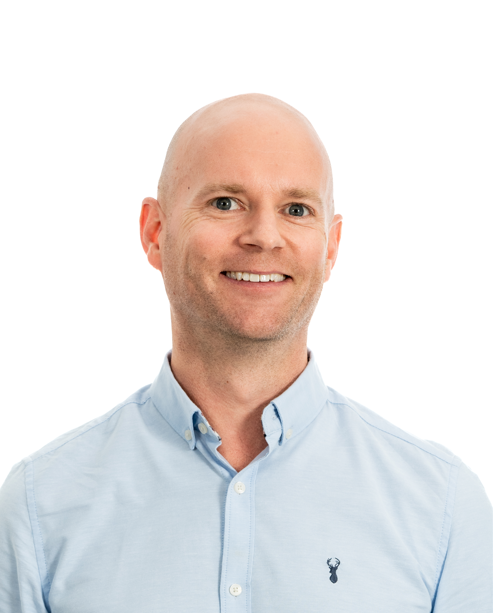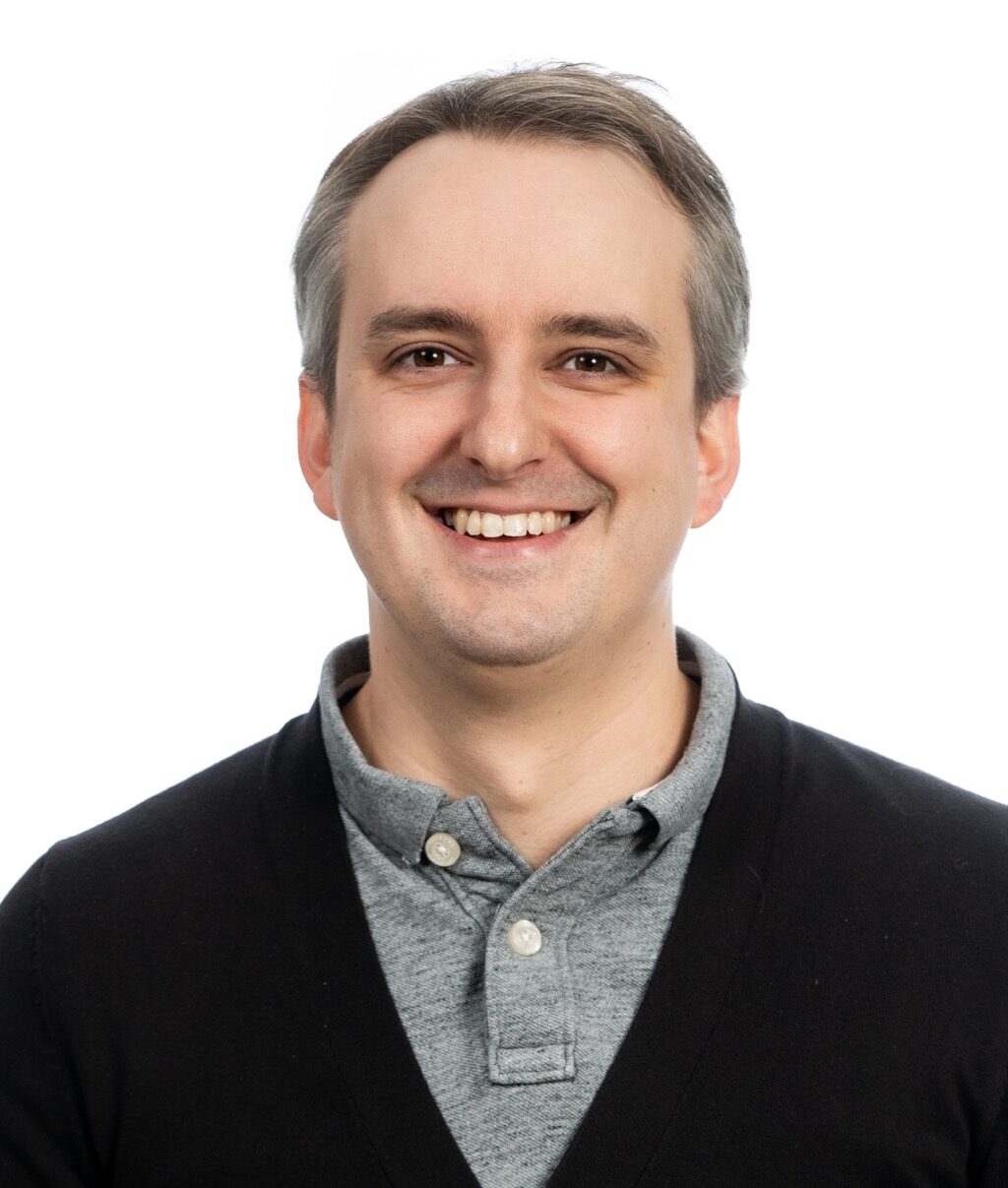Last week’s Future of Media conference was a melting pot of ideas, predictions and strategies shaping the future of the industry. From the growing influence of gaming to the enduring power of radio, from the challenges of social media to the creative spark that drives innovation; it’s clear that the future of media will be shaped by those willing to take risks, embrace new technologies and remain authentic in their messaging. Here are some of the most thought-provoking takeaways from the event.
1/The power of partnerships: radio’s unique trust factor
A discussion on partnerships was also compelling, with leaders from KISS, KFC UK&I and Bauer Media sharing how collaborations can challenge perceptions and build trust. Radio offers a unique space for brands to forge authentic connections with audiences. The discussion highlighted how KFC has used radio partnerships to showcase its community impact programs like Hatch, the KFC Youth Foundation and its partnership with FareShare for food donations. Rebecca Frank, Content Director (KISS), Danielle Ruggles, Brand Fame & Trust Lead (KFC UK&I), Tyler West, Presenter (KISS), and Krissie Ford, Group Client Director (Bauer Media) emphasised how radio’s trusted environment allows brands to communicate messages that resonate on a deeper level. Listeners often form close relationships with radio hosts, making it an ideal platform to convey meaningful messages. This is particularly useful for brands like KFC, which want to showcase their community efforts beyond their core product offerings. Radio’s agility, with its ability to quickly adapt content, further strengthens its role in delivering powerful messages.
2/Social media: navigating the challenges of content consumption
Simon Kilby, Managing Director of Bauer Media, raised critical questions about the impact of social media on society, particularly regarding trust and mental health. He highlighted how social media has become a breeding ground for misinformation, contributing to anxiety and depression, especially among young people. Kilby pointed out that 8 in 10 people in the UK encounter fake news daily, with social media being trusted by just 27% of the population, compared to 69% for radio.
This growing distrust is having real-world consequences. Kilby noted that anxiety and depression rates among young people have risen by 70% over the last 25 years. He reflected on the pressure parents face to give their children smartphones, which can further fuel these issues. Kilby’s call to action urged the advertising industry to take more responsibility in navigating this increasingly complex digital space and to be aware of the potential harm it can cause to mental health.
3/Creativity is key: don’t lose it
In a fireside chat with Stephen Miron, outgoing CEO of Global, the focus turned to creativity. Miron’s inspiring story of transforming Global into a billion-dollar business emphasised the power of personality and influence in media. According to Miron, resilience and passion are essential for success in this industry, especially for the next generation. His advice for young professionals? “Know your stuff and be confident.” The theme of creativity carried over into other sessions as well, where speakers highlighted the importance of relying on gut instinct and emotional intelligence in decision-making. While data and logic have their place, creativity and human insight remain critical in driving innovation and making impactful decisions.
4/Big screens and big wins: the power of cinema
Cinema made a splash at the conference, particularly in a case study on Hotpoint’s Bailey the Beagle advert. The campaign proved that cinema, often overlooked in media mixes, can deliver impressive results. The study found that cinema’s ability to capture attention far outpaced other channels, with viewers engaging for 48 out of 69 seconds, a much higher rate than on other platforms. The campaign also helped Hotpoint reach younger audiences, with an 11% increase in engagement. As a result, the CMO convinced her team to create longer, 60-second ads, which were later adapted for other platforms. Cinema’s flexibility also allows brands to pair their campaigns with films or actors that align with their messaging, making it an exciting avenue for future media strategies.
5/The future is gaming
A standout session from Craig Tattershall, GEEIQ’s Gaming Strategy Director, highlighted the growing importance of gaming in the media world. He explained that gaming is not just a passing trend, it’s a major force in connecting with younger audiences. Brands are increasingly investing in virtual worlds, which not only help boost brand loyalty but also provide significant uplifts in engagement. Tattershall provided fascinating examples, such as Paris Hilton’s virtual world “Slivingland”, a Roblox game with a concept connecting the Hilton brand to Paris Hilton in playful, innovative way, which generated 27,000 CRM sign-ups . Another case involved Walmart, which has been integrating virtual environments into its broader social media strategy by mirroring items from the real world within these spaces. He emphasised that gamers expect brands to add value to their gaming experience authentically, stating, “By offering in-game items, real-life rewards or creating innovative initiatives within a virtual brand activation, brands can truly connect with gaming audiences.” This type of genuine engagement can help transform gaming audiences into vocal advocates, something more brands are beginning to realise.
These takeaways just scratch the surface of the thoughts that came out of the sessions. What powerfully resonated from an agency perspective was how crucial it is to be in tune with your audience, a.k.a. think like a consumer. Themes of trust, creativity, engagement, attention and relevance were peppered throughout and everything led back to how the consumer feels and connects with a brand. Cautiousness around technology and digitalisation is still present, particularly a worry about de-humanising elements of connectivity with audiences. However, speakers remained optimistic about technology’s ability to support innovation. It’s about getting the balance right. Getting the right insight, innovating through media smartly and using data & measurement every step of the way is a recipe for success.
The travel industry is in a period of growth, with volumes returning to pre-pandemic levels. On top of this, consumer taste is diversifying, with demand for adventure travel and immersive experiences on the rise. The wealth of information available to would-be travellers via social media and reviews also means that the opportunity to go off the beaten track with confidence is bigger than ever before. All of this is good news for the travel insurance industry, with overall demand, and especially demand for higher premium policies, on the rise.
However, there are numerous challenges for insurance providers to overcome in the fight for market share. The plethora of choice for consumers in a highly competitive market, a lack of product understanding and an emphasis on price driven by the prominence of price comparison websites (PCWs), make it difficult to stand out.
So how can insurers drive demand without price being the sole deciding factor?
Audience insight is key. Whilst 30% of travel insurance is bought through PCWs, 40% is bought at the time that a trip is booked. This highlights the importance of using data to fuel audience understanding. Identifying an audience which is currently (or better still, is about to be) in-market will mean that you can advertise to an audience wherever they are consuming media, and not just within a highly sought-after and therefore highly priced, contextually relevant environment. Targeting the right people at the right time will help to gain a slice of that vital 40% of the market.
It is important to differentiate – both in terms of brand messaging & tone of voice as well as within your product offering. A brand that has a distinctive personality can gain cut-through by delivering on metrics such as favourability and memorability. This is a difficult thing to deliver creatively, but consistency in tone of voice and innovative, engaging use of media can really help a brand to stand out and get more bang for its buck. This also filters through to product offering. The banking industry has some great examples of challenger brands such as Starling and Monzo using technology and strong customer service to rapidly gain brand recognition and steal share of market. This encompasses everything they do, with their messaging and media approach reflecting the fresh and youthful feel of their brands. Starling highlighted this approach in the brand campaign, “A Bank Built for You,” which highlighted how banking is more than just money, with product development based on features that customers asked for. Differentiation within a cluttered market can help consumers to overcome the paralysis of choice and combat a lack of understanding to choose a brand based on product rather than price.
According to a poll of 10,000 consumers in Spring 2024, travel insurance providers are the least trusted of all general insurance providers. Strong communication and brand messaging is also a great way for brands to build trust, vital in a category where trust is this low.This should be reflected in a media strategy which targets channels, formats and environments where this messaging can be most effectively communicated to the desired audience.
Personalisation will also be an increasingly important way for brands to drive demand. Embedded insurance, allowing for personalised, relevant and real-time insurance policies, will make the process more straightforward for customers, removing some of the confusion which has led to cost being a deciding factor. This is also an advantage which individual travel insurance brands can have over PCWs – the benefit of going direct to a specialist provider is that consumers can be reassured that they are getting the product that suits them best. Again, advertising should play a vital role in amplifying the impact that personalisation can have. The role of media here is to highlight customer stories that show the simplicity of the user journey and benefits of the product. Data could be used to personalise messaging and activity to the user via media and show an individual the benefits that a personalised insurance product can bring to them.
In a growing category without a single brand that clearly dominates the space, a focus on data-driven audience targeting, an innovative and consistent brand tone of voice and a simple yet personalised user journey could be the key to unlocking increased market share and accelerating the growth of a brand.
“The other piece of advice I would give is, always be curious and interested…Even if it isn’t necessarily right, it’s always better to look like you give a sh*t.”
Lots of advice from Gary Revill, Client Services Director as we find out a little more about what makes Gary tick as well as how and why he got into media planning and buying.
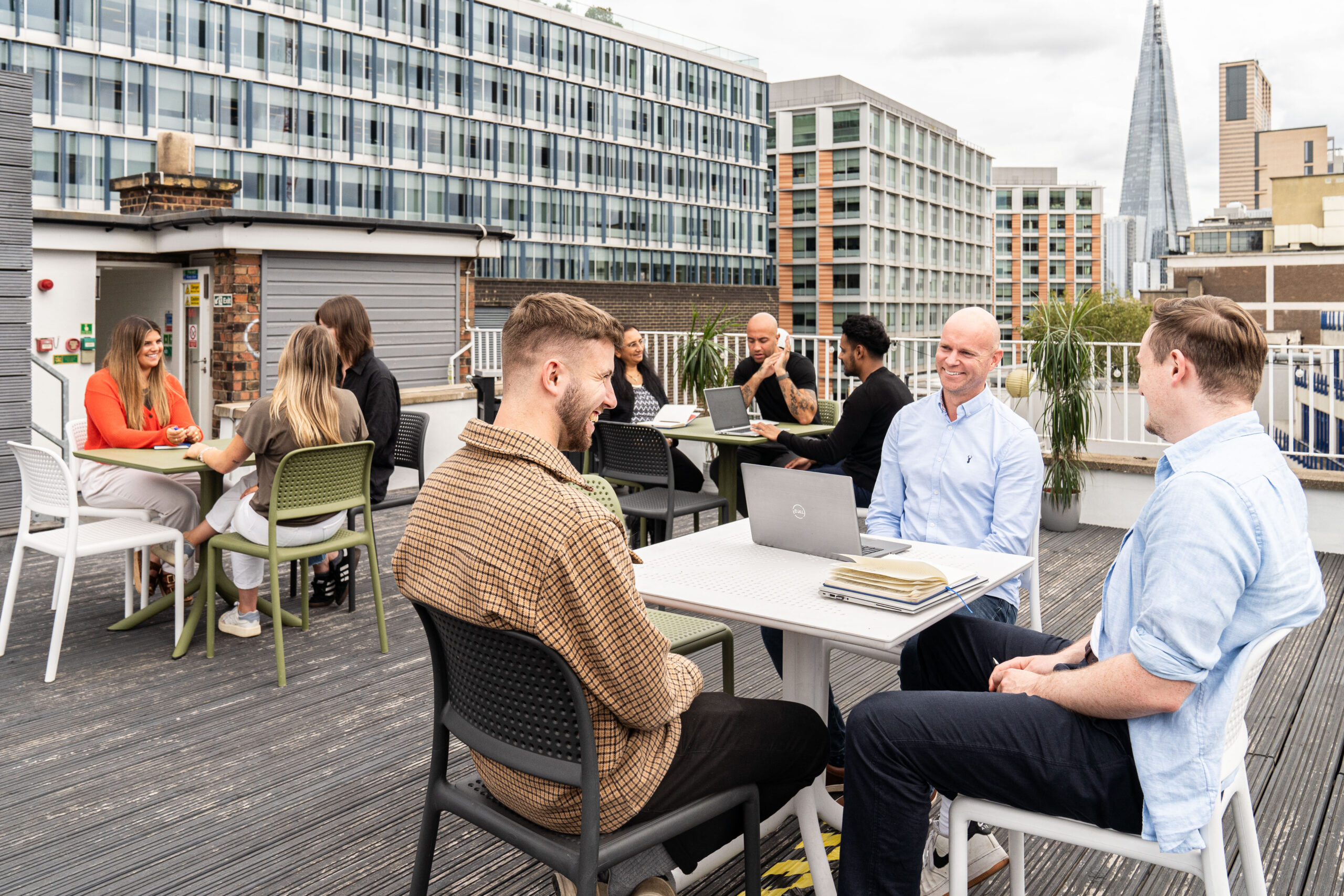
What led you to a career in media?
It was pure indecisiveness! I struggled to find what I wanted to do as a career initially, but there was always a spark there for the advertising industry. So, I started by pinpointing what I enjoyed and what areas of the advertising world I wanted to take a chance on. Discovering that I enjoyed working with numbers and had a deeper interest in the driving forces behind people’s behaviours, the world of planning and buying media seemed to tick all the boxes.
My first role was in MediaCom’s “Direct” department, where I worked with big brands, spending generously across a range of channels. It was a collaborative role and I had to work with departments across the agency, from brand planning to econometrics. This was a great grounding for me in the industry. I spent almost a decade working at big network agencies before joining MI.
What is it that you love about media and agency life?
Before embarking on my media agency era, I worked within an industry that was let’s just say… a lot less supportive. It worked off a blame culture and at times it was even a bit abusive – but luckily the media industry could not be more different. The vast majority of people are kind, they want to work collaboratively and help each other out when and where they can. So, I guess it’s the people that I love within the industry. Perhaps it’s the creativeness of the sector that fuels this. I have come across people who want to do the best job they can all whilst doing it in a personable and friendly nature.
What advice would you give to someone looking to go into the world of media?
As it is such a varied industry, there is definitely something for everyone. My advice would be to decide which element of it you feel you will find the most interesting and get exploring it. It could be research, creative, data analysis, strategy or even something broader such as account management which gives you exposure to all the nooks and crannies of the industry. Make sure you don’t settle for a career or role that doesn’t fulfil your needs and desires of where you see your career path taking you. It is a long old road to retirement so find your niche, make sure you enjoy it and find people you enjoy working with. Sometimes that’s half the battle.
The other piece of advice I would give is, always be curious and interested. By being naturally curious, you will naturally go above and beyond to delve into the reason behind a result or a client issue. Making you more likely to be the person with the right answer. Even if your answer isn’t necessarily right, it’s always better to look like you give a sh*t. That impresses me as a team leader. Never assume someone else in the room already knows the right answers.
What mistakes have you learnt from the most?
It’s a cliché but communication is key! It is usually (not always!) better to communicate than to keep an issue to yourself. Particularly when it comes to an issue with a client. If a campaign isn’t performing, be transparent and inform them about what you are doing to rectify it rather than hoping that things miraculously turn around. If for some reason or another activity hasn’t gone live, explain the issue – don’t just hope the client won’t catch you red handed and discover the issue themselves. Communicating and working things through helps to build trust. This goes for all types of relationships between client, agency, media partners, internal departments and maybe even marriages. Free relationship advice right here.
Do you have a dream client or an ad campaign you particularly love?
A dream client for me isn’t necessarily about the brand itself or the space in which they operate and trade in. I care about working with clients who are ambitious, looking for a fresh strategy and willing to take risks. For example, brands that work with us on a multi-channel, media neutral basis and see the relationship as a collaborative partnership. As long as the work is evolving, refreshing and challenging, it could be any brand within any industry.
Last week, together with creative agency GOOD, we launched a new campaign, Let’s Rethink, with national charity Rethink Mental Illness. Over half a million people in the UK are severely affected by mental illness. Three in five people living with a mental illness say the fear of how others perceive them has stopped them seeking support.
Let’s Rethink aims to challenge the stigma and discrimination so many experience. One of the most difficult things about living with a mental illness can be the judgement of others. The campaign launches with a 30 second film that flips the narrative and shows that it’s not what’s going on in the minds of those affected by mental illness that makes life hard, it’s what’s going on in ours. To reach a broad audience and encourage more people to rethink their attitudes towards mental illness, we secured a media partnership with ITV for the TV advert. The advert is supported by a social campaign that will run across paid channels and Rethink Mental Illness’ own platforms.
Both the advert and social campaign direct audiences to download a free guide, created by GOOD. The guide contains expert advice and practical tips to help the UK public better understand mental illness and help end the harmful cycle of stigma.
James Harris, Director of Communications and Campaigns at Rethink Mental Illness says “People severely affected by mental illness tell us that the challenges they face – including managing symptoms and striving to access timely care and treatment – are often exacerbated by the stigma and discrimination they encounter. Although there has been increasing awareness of mental health in recent years, understanding of severe mental illness has lagged behind.
As a result, people we support continue to face discrimination at home, in schools, and in the workplace. We wanted to shine a spotlight on mental illness with an impactful, thought-provoking campaign to encourage the public to reconsider their preconceptions about those severely affected by mental illness.”
The travel industry is in a period of growth, with volumes returning to pre-pandemic levels. On top of this, consumer taste is diversifying, with demand for adventure travel and immersive experiences on the rise. The wealth of information available to would-be travellers via social media and reviews also means that the opportunity to go off the beaten track with confidence is bigger than ever before. All of this is good news for the travel insurance industry, with overall demand, and especially demand for higher premium policies, on the rise.
However, there are numerous challenges for insurance providers to overcome in the fight for market share. The plethora of choice for consumers in a highly competitive market, a lack of product understanding and an emphasis on price driven by the prominence of price comparison websites (PCWs), make it difficult to stand out.
So how can insurers drive demand without price being the sole deciding factor?
Audience insight is key. Whilst 30% of travel insurance is bought through PCWs, 40% is bought at the time that a trip is booked. This highlights the importance of using data to fuel audience understanding. Identifying an audience which is currently (or better still, is about to be) in-market will mean that you can advertise to an audience wherever they are consuming media, and not just within a highly sought-after and therefore highly priced, contextually relevant environment. Targeting the right people at the right time will help to gain a slice of that vital 40% of the market.
It is important to differentiate – both in terms of brand messaging & tone of voice as well as within your product offering. A brand that has a distinctive personality can gain cut-through by delivering on metrics such as favourability and memorability. This is a difficult thing to deliver creatively, but consistency in tone of voice and innovative, engaging use of media can really help a brand to stand out and get more bang for its buck. This also filters through to product offering. The banking industry has some great examples of challenger brands such as Starling and Monzo using technology and strong customer service to rapidly gain brand recognition and steal share of market. This encompasses everything they do, with their messaging and media approach reflecting the fresh and youthful feel of their brands. Starling highlighted this approach in the brand campaign, “A Bank Built for You,” which highlighted how banking is more than just money, with product development based on features that customers asked for. Differentiation within a cluttered market can help consumers to overcome the paralysis of choice and combat a lack of understanding to choose a brand based on product rather than price.
According to a poll of 10,000 consumers in Spring 2024, travel insurance providers are the least trusted of all general insurance providers. Strong communication and brand messaging is also a great way for brands to build trust, vital in a category where trust is this low.This should be reflected in a media strategy which targets channels, formats and environments where this messaging can be most effectively communicated to the desired audience.
Personalisation will also be an increasingly important way for brands to drive demand. Embedded insurance, allowing for personalised, relevant and real-time insurance policies, will make the process more straightforward for customers, removing some of the confusion which has led to cost being a deciding factor. This is also an advantage which individual travel insurance brands can have over PCWs – the benefit of going direct to a specialist provider is that consumers can be reassured that they are getting the product that suits them best. Again, advertising should play a vital role in amplifying the impact that personalisation can have. The role of media here is to highlight customer stories that show the simplicity of the user journey and benefits of the product. Data could be used to personalise messaging and activity to the user via media and show an individual the benefits that a personalised insurance product can bring to them.
In a growing category without a single brand that clearly dominates the space, a focus on data-driven audience targeting, an innovative and consistent brand tone of voice and a simple yet personalised user journey could be the key to unlocking increased market share and accelerating the growth of a brand.
This month we chatted to our wonderfully quirky and creative Business Director, Kelly Kershaw. From starting out discovering insect species in the west country, to becoming the media guru she is today – Kelly has a fascinating story and lots of useful advice along the way.

What led you to a career in media?
After completing my Zoology degree in Nottingham and my masters in Bangor, I found myself working in a field down in Dorset studying ants and butterflies, accompanied by bearded old men. All my friends were living it up in the big city, having an absolute hoot and I got immense FOMO. So, I decided to down the tools in the field, applied for a job in the city at MediaCom, received the offer and I signed on the dotted line in a heartbeat! I ditched the rolling hills for the big smoke and I never looked back. I had all of zero years’ experience in media but by joining the direct response team at MediaCom, my science-based degree came into its own with the opportunity to use my analytical brain. A few years later I was offered the opportunity to join MI and whole decade later, I’m still here!
What is your proudest moment at MI?
Without a doubt, it has to be working with the MND Association. Motor Neurone Disease is so cruel and to raise awareness of those living with the disease as well as those caring for their loved ones is so important. The campaign, which you can read more about here, was executed incredibly well and it really resonated with the audience. Whilst it may sound quite niche, buying advertising in a well-known soap like Coronation Street is something I have always wanted to do. To have secured a media first and have the campaign running alongside a poignant story line about MND in the well-known soap was not only a proud personal achievement but also a great success for increasing brand awareness. To top it all off, the campaign was nominated for both the Third Sector Awards and The Drum Awards, so we are keeping everything crossed!
What advice would you give to someone looking to become a Business Director or more generally pursuing a career in media?
Really think about the company and culture you want to work in as I have found media has changed quite a lot. For me, a small independent culture is vital. MI really feels like a family. Don’t get me wrong massive agencies have ample experience, specific teams and tailored roles working with wide ranging clients, but a smaller agency allows you jump in at the deep end, roll your sleeves up and learn it all. So, try to figure out which working environment will allow you to thrive the most.
What mistakes have you learnt from the most?
The mistakes that I have learnt from the most are definitely the f**k ups I have made and sat on for a while in “panic mode”. It meant that I isolated myself trying to figure out how I can overcome them or make things right. In reality, there is always someone who you can turn to straight away who will have the answer. It is important to speak up sooner rather than later to avoid digging bigger holes for yourself.
Do you have a dream client or an ad campaign you particularly love?
Full moon… half moon… total eclipse. It has to be the Jaffa cake ad. Who knew a biscuit or cake (that’s a great debate) could be so versatile, both delicious and educational. I love any ad that is slightly bonkers and McVitie’s Jaffa Cake really thought outside the box with this one. It captured the attention of the nation.
Who is your role model and why?
It’s got to be Jo Blake, our Head of Investment at MI. She is an absolute firecracker. Jo’s been in the industry for a long while and she is so well respected. She knows lots of media people from the big dogs to those starting out in their career and she is loved by them all. She constantly has her ear to the ground and it really shows in her work. Oh, and her wardrobe and swearing vocab are second to none and never fail to brighten up people’s day.

The news that Google will no longer be depreciating third party cookies has been spoken about a lot, including by our partners at Search Labs. The main takeaways are:
- Google will still allow people to opt out of cookies permanently, there will be an impact felt by this
- Various browsers and operating systems had already disallowed third-party cookies, meaning the AdTech industry was already shifting to other forms of identity resolutions for tracking and measurement.
- To some degree, the drop in identifying signals will need to be replaced by modelling for both targeting and measurement
This means that in reality, nothing much is changing… So, instead of going into more detail on why this matters, I wanted to ask a question: who does this matter to? Brands? Agencies? AdTech Vendors? Media Owners or Publishers? Who really needs the third-party cookie, or any of its alternatives, to stay in business?
Brands
Brands don’t need cookies to generate revenue. They need their customers to buy their products. Yes, over the years the cookie has helped them do that by giving them a way to see which channels generate the best ROI, but cookies did not give clients the full picture anyway.
This doesn’t mean that advertising is suddenly irrelevant because it’s harder to measure, or that adverts can’t reach the right audience. It just makes it harder for advertisers and their agencies to do it in the way they’ve long been accustomed, by using algorithms to do this for us. In fact, I would argue that it levels the playing field for comparing ROI across offline and digital media, which is a positive thing.
Fundamentally though, successful campaigns that drive a strong ROI existed before the cookie and will continue to exist after them. Brands and their agencies do not need cookies to run successful businesses or even successful marketing campaigns.
Ad Tech Vendors & Digital Publishers
The cookie has powered this section of the advertising ecosystem for years, playing a much more important role in their business models than brands’. The sheer scale of digital advertising inventory that became available as the internet grew necessitated a common way to value it at scale, in a way that everyone could use. Cookies did this by recording browser and website behaviour allowing vendors to use this information to build profiles and target audiences. However, this resulted in a model where the industry has ended up building ever more sophisticated models to game the system and chase these data signals.
Over 50% of available web inventory is already cookieless and this is continuing to shrink, so the market has already had to adapt. AdTech vendors and digital publishers using cookie-based technology will continue to face issues in an ever-decreasing pool to identify and monetise audiences, which for advertising means fewer effective solutions. But the market is shifting. We’ve already seen several cookieless models appear and the power of first party data is becoming ever stronger.
Contextual targeting, which prioritises the content surrounding an ad placement over the identity of a user, is one of the core ‘replacements’ for the cookie. In traditional media, a lot of value is placed on ensuring that media placements are contextually relevant. We buy certain airtime on TV at a premium because it’s contextually the most valuable. So why has digital marketing historically valued cookie-powered audience targeting above contextual relevancy? Brands and agencies certainly saw better short-term ROI when relying on cookies and AdTech vendors and publishers could certainly monetise more inventory. But in the end, did consumers get the best deal?
Consumers
Let’s not forget that the driving force behind cookie depreciation is that many consumers found hyper personalisation and one-to-one targeting creepy and invasive. Who hasn’t been chased around the internet by ads powered by cookies or tried to read some content only for a delayed ad to load and push that content out of sight? We all know a site or two where the publisher has flooded its site with placements because they could make more money selling more inventory.
All of this has culminated in a poor experience for many consumers on the open web. We know consumers like good advertising and are not ignorant to the value exchange that brands need to monetise their sites to create content. But consumers are clearly paying less attention to these ads than those on TV and other channels, as attention partners like Lumen can demonstrate time and time again.
So, are cookies really vital for anyone across our industry?
Cookies allowed for a huge amount of data to be collected across the web. The industry took advantage of this new and unregulated data and sold the promise of hyper targeting, competitive advantage and huge sales growth. However, we have seen over time that regulation was required, user experience has diminished, and the digital world has joined a race to the bottom for the bidding algorithm.
So, are cookies vital?
Well, no. Cookies have been ‘on their way out’ for a number of years anyway. We will just need to continue to adapt as an industry. Maybe we will end up with a space which delivers more creative, more engaging and contextually relevant advertising to consumers, while delivering true value to clients.
In the early hours of Monday 6 February 2023, two major earthquakes hit northwest Syria and southeast Turkey causing devastation on a vast scale. Médecins Sans Frontières’ (MSF) teams, who were already working in northern Syria, immediately launched an emergency response and began treating patients and delivering supplies.
As it receives no funding from governments, it is imperative that MSF can maximise its fundraising from moments like this where the work it does is thrust into the national conversation. This was the driving force behind developing MI Media’s Emergency Response, a set of principles and actions for a paid media response that will maximise the potential fundraising returns from heightened interest in a charity’s work.
Whilst a humanitarian crisis is an obvious opportunity for charities like MSF to push for donations, there are opportunities for the principles of the Emergency Response to be repeated across the charity sector. From Nigel Farage criticising the work of RNLI, to a significant public figure revealing a cancer diagnosis, to the increasing use of foodbanks across the UK; it doesn’t take much for the work that charities of all types and sizes are involved with to be brough to the top of the news agenda.
With emergencies often out of the news cycle as quickly as they are in, reacting quickly with an effective media response is imperative to maximising the chances of a positive fundraising campaign. Below are the core principles we apply before, during and after an emergency hits.
Before the emergency
Ensure decision makers are in support:
It’s all well and good to have a champion for Emergency Response activity but, if at the point of an emerging crisis, the people who approve advertising spend aren’t aligned, then it’s a complete non-starter. We ensure that everyone is bought in to the Emergency Response approach from the get-go which saves a lot of time further down the line.
Prepare media and creative response:
Whilst we can’t know when and how an emergency will arise; we develop an informed plan for how to respond before an emergency actually hits. Engaging with media owners, developing prepared media plans and working with the creative agency to develop a template for the creative execution are all done ahead of time. Remember, with the window of opportunity being as little as a few days, time is of the absolute essence for getting activity live.
At the point of and during the emergency
Determine the scale of the opportunity:
The key question we ask of any emergency is whether there is potential to jump on news coverage with paid support. Some stories that break don’t garner momentum and, for those, it may be futile to launch a paid campaign. Others, however, will break across a variety of news sources, will be discussed on social media and maybe even attract TV coverage. In such instances, a paid response should be taken very seriously indeed.
Tailor your creative:
Though having a creative template prepared before a response can save valuable time the moment an emergency hits, as soon as an emergency reveals itself, the creative must be tailored to the current context. We work with creative agencies to consider relevant imagery, facts & figures and different ways of storytelling. This is the moment to capture the public’s attention and secure their donations. It is paramount to underpin creative with a compelling call to action, highlighting the urgency of the situation and how your work plays a key role.
Make Donating Easy:
The crisis itself may engage with a broad audience of people who each have different preferences for how they like to donate. From press coupons and phone & text response to PayPal and website landing pages; we ensure that any charity we work with has a range of response mechanisms to prevent any donors from being excluded.
Keep on top of reporting:
Whilst an emergency may only garner news coverage for a couple of weeks, some do extend beyond that short period of time, Regardless, advertising remains effective even as news coverage tails off. We continue to track the sources of daily donations to determine whether public interest is still strong and that paid media should continue.
After the emergency
Provide transparent reporting:
After the crisis, sending out impact reports that show donors the difference their contributions made fosters trust and helps to develop long-term donor relationships. This may also help to combat the challenge that charities often face where donors give to the cause rather than a specific charity.
Adapt and develop your Emergency Framework:
In the first instance, a light budget test appropriate to determine whether a paid media response is appropriate. If it proves successful, the case for increased investment should be clear. However, even after an Emergency Framework has been established and implemented, we always review what can be done better. Is there a way to react even quicker to the emergency? Can a broader mix of media opportunities be explored? Is there an opportunity to engage with corporate and philanthropic donors? Charities can’t afford to rest on their laurels but should actively work to optimise the process and levels of investment to continue to make the most of these fantastic fundraising opportunities.
The window of opportunity for a charity to maximise donations around an emergency is small. Having a clear framework in place to deliver rapid advertising maximises support during the critical window when the need is greatest and public willingness to help is at its strongest.
As we kick off the autumn event season, our team recently attended Campaign’s TV conference. From the nuances of attention and the overwhelming choice available to viewers, to the transformative power of data and AI on TV; here are our top five key takeaways from the day.
- The era of less
Sarah Picazo from The Trade Desk highlighted that “changes in the industry are nuanced, with the linear and SVOD worlds merging.” In this evolving landscape, it’s crucial to do more with what we have. Omni-channel strategies are essential for managing frequency across channels and ensuring consistent messaging. TV remains vital for building an emotional connection with the audience. New research by The Trade Desk reveals that omni-channel campaigns drive greater attention and reduce fatigue compared to CTV alone. - Is all attention created equal?
TV offers an attention bargain, but its effectiveness varies by channel, time of day and programme. David Chopping from Sky emphasised, “Quality of reach is more important than just reach and attention is key to that.” Studies show that people pay more attention during peak times and to shows they are genuinely interested in. New metrics, such as 1+ attentive reach, are being optimised by genre and daypart. Vicky Fox mentioned that Omnicom Media Group has developed an always-on panel measuring eye tracking and attentive moments. - Consumer choice paralysis
With endless options available, viewers take an average of 10.5 minutes to decide what to watch and 20% end up choosing to do something else instead. It’s essential to harness the positive aspects of this choice overload, particularly in terms of advertising. Whilst it is great for consumers to have so much choice, this highlights the fragmented landscape that advertisers are operating in. This being the reason metrics such as attention are becoming so important because it is ever more challenging to ensure you are hitting the right audience at the right moment. - AI: Enhancing efficiency, not replacing creativity
An interactive session underscored that while AI can enhance efficiency, it cannot replace the human touch in eliciting emotion from creative content. However, AI can significantly improve ad production and campaign analysis, helping advertisers optimise the personalised TV ad experience. - Data: The path to CTV’s promise
Dan Cohen from Sky noted that the power of live TV is becoming increasingly important as viewing fragments. It’s about peak content rather than peak television. Fragmentation occurs in two forms: different devices and varied viewing times. The concept of appointment viewing has fundamentally changed. There will be a shift from fixed price CPT deals to decision-based pricing, with each impression uniquely valued as data usage improves AV audience targeting. Ed Johnson from The Trade Desk highlighted this trend.
Since January, we’ve been working with Coronation Street as one of its key characters, Paul Foreman, navigated his Motor Neurone Disease diagnosis. As his story reached its emotional conclusion last night, the MND Association Love Inside campaign ran in a media first ‘Coronation Street presents…’ ad break takeover, with a fresh call to join them in the fight against MND and fund vital research & support.
The Love Inside launched in a media first with the first ever ‘Coronation Street Presents…’ ident. Throughout the rest of the campaign, we secured unprecedented access for the MND Association to Coronation Street’s storylines to ensure that we placed the ad’s airtime against the most relevant episodes and plots.
The culmination of this campaign has seen us secure another media first with a ‘Coronation Street presents…’ ad break takeover. At the end of this emotional episode, a Coronation Street ident shared with viewers that they have been following Paul’s storyline on the soap and that for many MND sufferers and carers, this is a reality. The ident was followed by MND Association’s powerful ad before another Coronation Street ident then urged viewers to head to the MND Association website to find out how they can support the vital work of this charity. In the lead up to last night’s episode, we also placed ads in press titles including Woman’s Own and Radio Times, and around listings for Paul’s last episode in TV listing publications.
Created by GOOD Agency, the ad is designed to reach more people and drive meaningful conversations about life with MND. The partnership we secured with ITV has provided the charity with a unique platform to work with the UK’s longest running and most watched TV show to raise national awareness of MND.
To find out more about how you can support by raising awareness about MND, click here.
